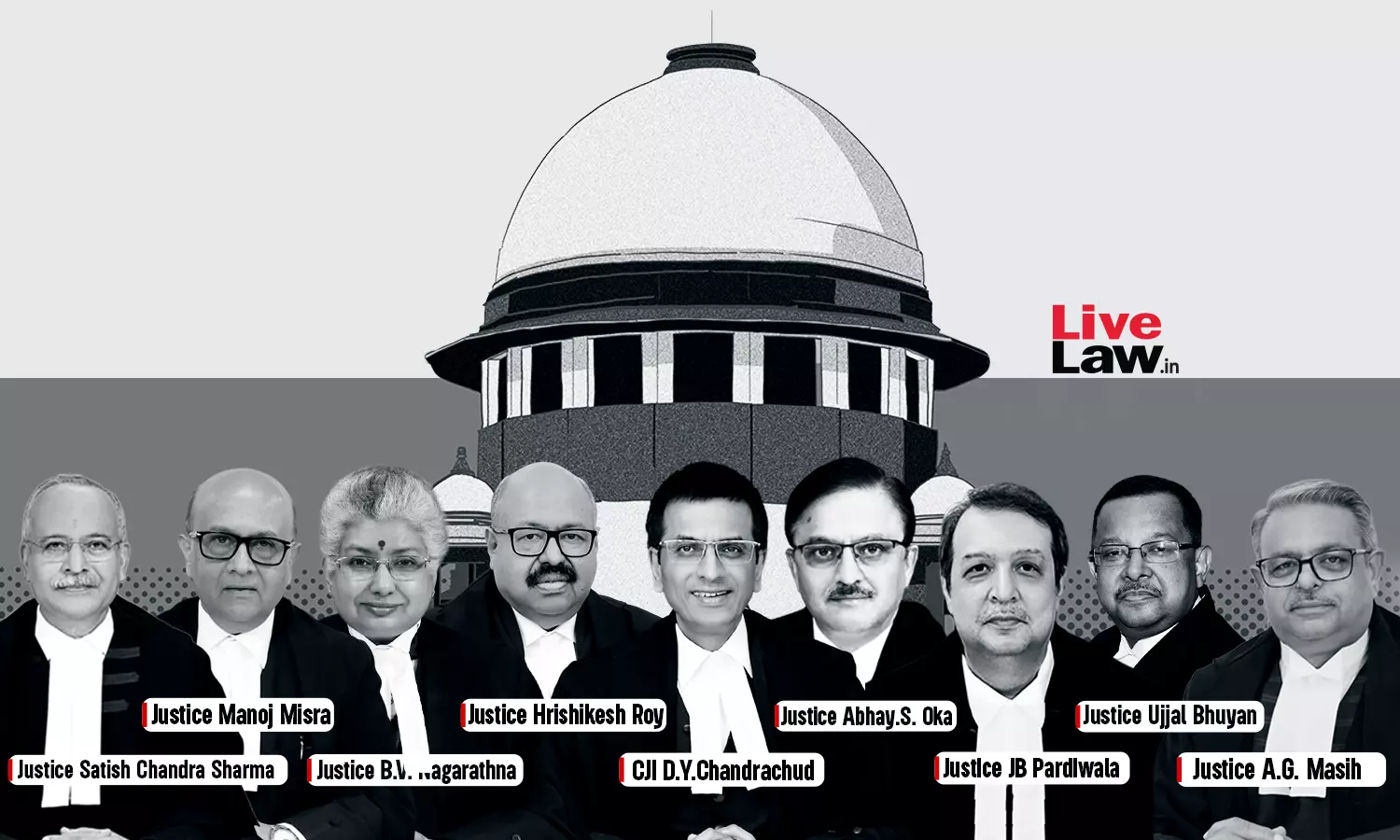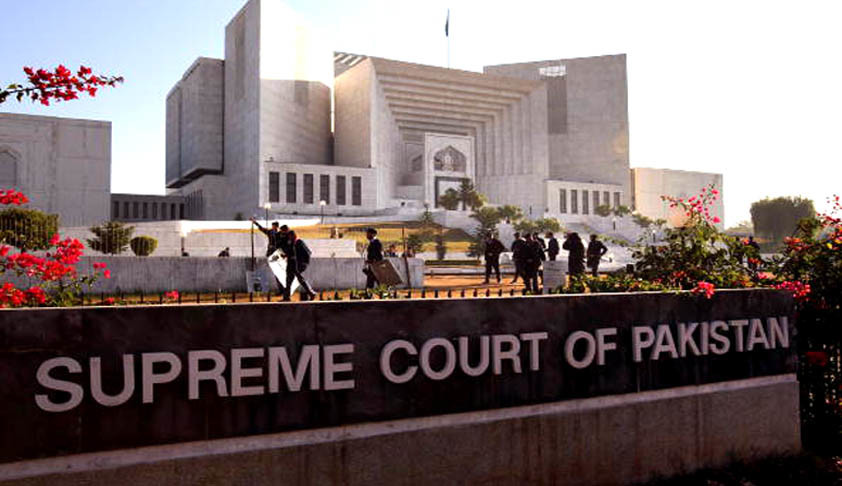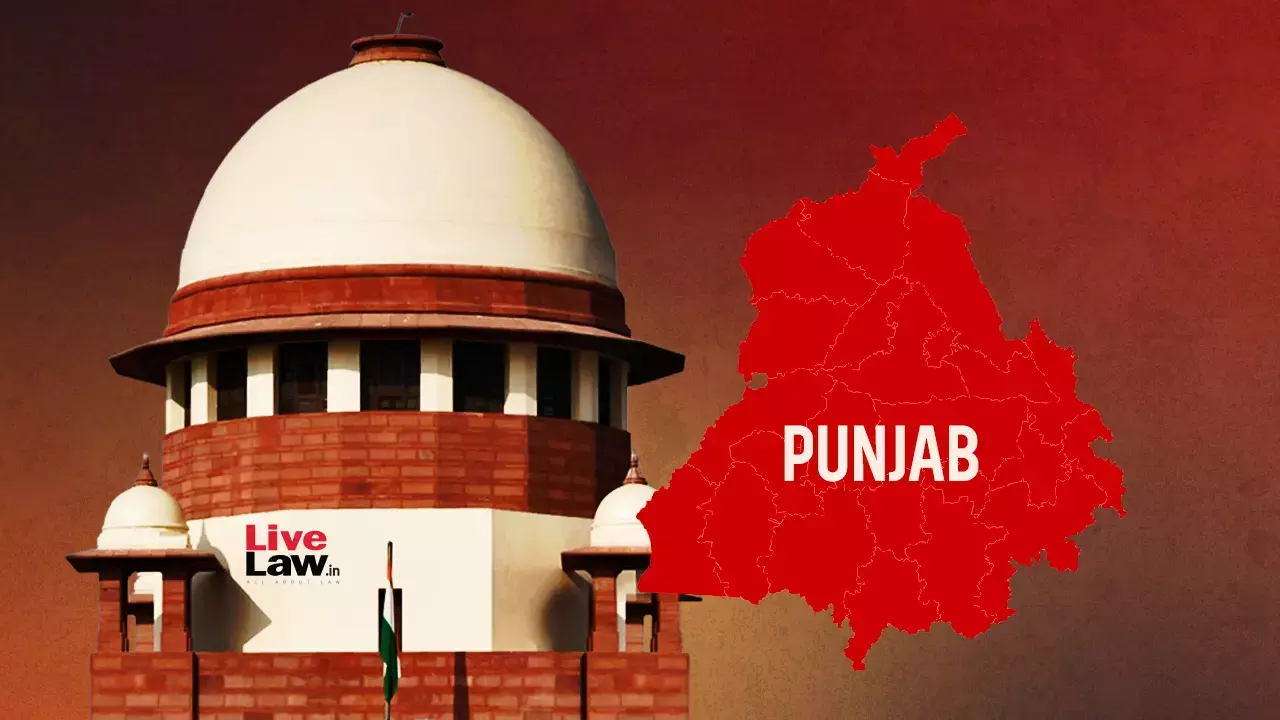Is Royalty On Mining Leases Tax? What Are States' Powers To Tax Mineral Rights? Supreme Court 9-Judge Bench Reserves Judgment

The Supreme Court 9 judge constitution bench on Thursday (March 14) reserved its judgment on the issue of whether royalties on mining leases be considered as tax and whether the States have the power to levy royalty/tax on mineral rights. The 8 days long hearing deliberated upon the multifaceted taxation matter of mineral-bearing lands. The key reference question involved in the present matter...
The Supreme Court 9 judge constitution bench on Thursday (March 14) reserved its judgment on the issue of whether royalties on mining leases be considered as tax and whether the States have the power to levy royalty/tax on mineral rights. The 8 days long hearing deliberated upon the multifaceted taxation matter of mineral-bearing lands. The key reference question involved in the present matter is to examine the nature and scope of royalty as prescribed under Section 9 of the Mines and Minerals (Development and Regulation) Act, 1957 (MMDR Act) and whether it could be termed as tax.
The bench headed by CJI DY Chandrachud comprises Justices Hrishikesh Roy, Abhay Oka, BV Nagarathna, JB Pardiwala, Manoj Misra, Ujjal Bhuyan, SC Sharma and AG Masih. Among the batch are petitions challenging the Bihar Coal Mining Area Development Authority (Amendment) Act, 1992 and the rules framed thereunder, which imposed additional cess and taxes on land revenue due from mineral-bearing lands.
The matter was referred to 9 judge bench in 2011. A three-judge bench headed by Justice SH Kapadia had framed eleven questions to be referred to the nine-judge bench. The three-judge bench clarified in this case that the reason why it was not referred to a five-judge bench and directly referred to a nine-judge bench because prima facie, there appeared to be some conflict in the decisions of State of West Bengal v. Kesoram Industries Ltd. and Ors which was delivered by a bench of five-Judges and India Cement Ltd. and Ors. v. State of Tamil Nadu and Ors. which were delivered by seven-judge benches.
The 5 Main Issues Before The Bench
1. What is the true nature of royalty determined under s. 9 r/w s.15(1) of the MMDR Act of 1957 and whether a royalty is in the nature of tax?
2. What is the scope of entry 50 List II of the 7th Schedule of the Constitution of India and what are the limitations imposable by Parliament in the exercise of its power under entry 54 List I? Does s.9 or any other provision of the MMDR Act contain any limitation with respect to the field in entry 50 List II?
3. Whether the expression - 'subject to any limitations imposed by Parliament by Law relating to Mineral development' in Entry 50 List II pro-tanto subjects the entry to Entry 54 List I which is a non-taxing general entry and consequently there is any departure from the general scheme of distribution of legislative power as enunciated in NPV Sundaram's Case 1958 SCR 1422 ?
4. What is the scope of Entry 49 List II and whether it envisage facts which involve the measure based on the value of the produce on the land, would the constitutional position be any different qua a mining land on account of Entry 50 List II r/w Entry 54 List I?
5. Whether Entry 50 List II is a specific Entry in relation to Entry 49 List II and would consequently abstract mining land from the Scope of Entry 49 List II?
Arguments By The Appellants
It was contended that the term "limitation" in Entry 50 List II implies putting a cap on the power to tax rather than an outright transfer of this power to Parliament. Referring was also made in paragraph 34 of the decision in Kesoram Industries - The first sentence of the paragraph states that the court is of the opinion that royalty is a tax, while the last sentence asserts that royalty is not a tax on land but a payment for the user of land. Mr Rakesh Dwivedi appearing for the State of Jharkhand raised a possibility that a subsequent bench could harmonize this apparent contradiction by suggesting that adding a cess on royalty would make it consistent. He further emphasised that up to paragraph 33, there was no debate on whether a royalty is a tax.
It was further argued by the Mineral Development Authority of the State of UP, asserted that Entry 50 doesn't grant the Union the power to tax mineral rights. He emphasized that it acts as a limitation on the state's authority rather than enabling the Parliament to tax. Hansaria argued that if royalty is deemed a tax, it should fall under specific entries between 82-92(b) of List I, and a limitation power on the state cannot transform into an enabling power for the Parliament.
Referring to Section 2 of the MMDR Act (Union should take under its control the regulation of mines and the development of minerals to the extent hereinafter provided.), it was contended that the Parliament's powers were confined to those delineated in the Act, primarily under Section 18 concerning mineral development. It was explained that any restrictions under Entry 50 would be limited to Section 18, and the Parliament had consciously refrained from imposing restrictions on the state's authority to levy taxes on mineral rights.
Entry 50 List II provides States with the authority to levy taxes on mineral rights within their territories, but it is subject to limitations that can be imposed by Parliament through laws related to mineral development. The limitations imposed by Parliament may influence the extent to which states can exercise their taxing powers concerning minerals.
Arguments By The Union
The Union and the Eastern Zone Mining Corporation contended that Entry 50's language goes beyond mere development or conservation and is uniquely crafted for holistic national welfare. Drawing attention to Entry 50 as the only entry where Parliament limits the power of the State, the respondents called for a proper interpretation of the limiting phrase, "imposed by the law of the Parliament relating to Mineral Development." Respondents argued against a narrow interpretation that requires a specific section in the MMDR Act explicitly prohibiting states from imposing taxes. Instead, the union urged a broader understanding of the phrase in its true spirit. The existence of the MMDR Act itself was sufficient to limit the state powers under Entry 50 List II.
The legislative intent of the MMDR Act, argued the Union, was purely to consider the holistic view on the management of national minerals at the Countrywide and Global levels.
Moreover, the respondents urged the need to see the potential distortion caused by non-uniform fiscal impositions on minerals, particularly those outlined in Schedule 1. It was contended that Parliament's imposition ensures uniformity in revenue distribution across states, avoiding discrepancies. The Union cautioned against an overreliance on Entry 49 (The state's power to levy taxes on lands and buildings), advocating for a broader interpretation of measures and a narrow reading of limitations under Entry 50. It was asserted that such an approach aligns with both the legislative intent of the MMDR Act and the vision of the founding fathers, who recognized the paramount importance of central control over minerals compared to land.
A detailed report on today's hearing will be published soon.
Case details : Mineral Area Development v. M/S Steel Authority Of India & Ors (CA N0. 4056/1999)




